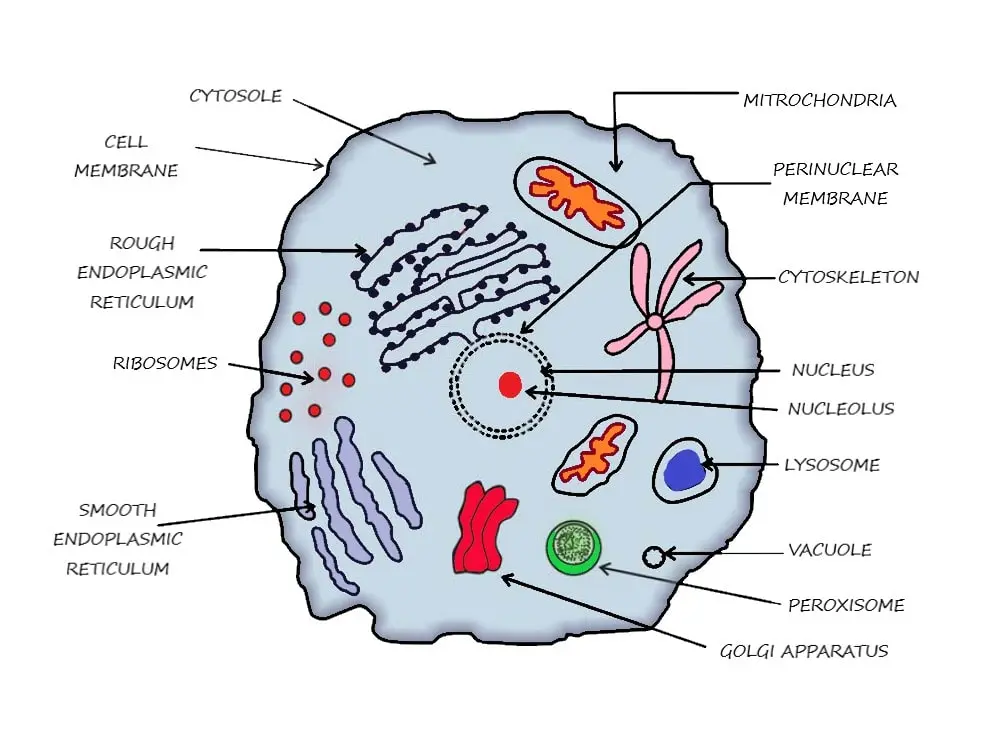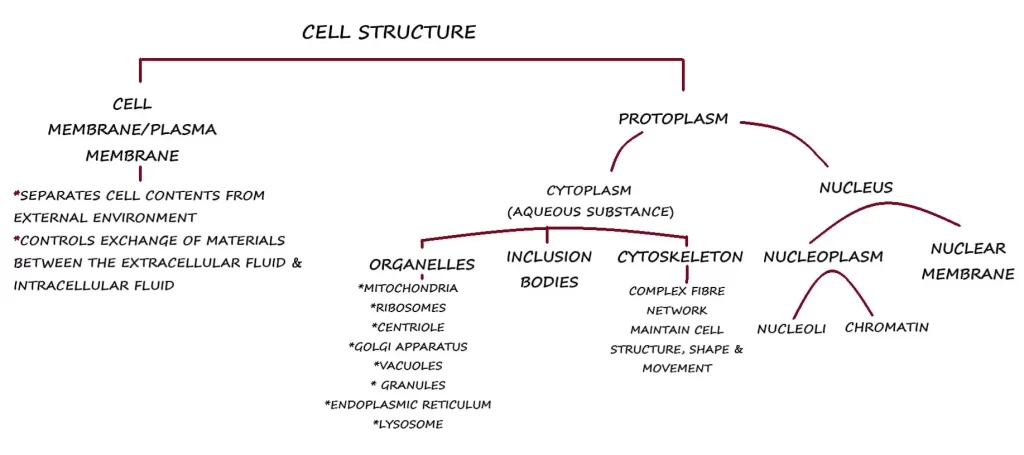
The word ‘Cell’ (Latin: cella) means a small room or chamber which was first introduced by Robert Hooke (1635- 1703).
Cells are the structural and functional units of all the living organism.
They are capable of carrying the process of life independently.
Human body contains about 100 trillion cells.
Table of Contents
ToggleGENERAL CHARACTERISTICS OF CELL
- Needs nutrition and oxygen.
- Cell can produce its own energy required for its growth, repair and other activities.
- Eliminates carbon dioxide (CO2) and other metabolic wastes.
- Maintains the medium, i.e., the internal environment for its survival.
- Shows immediate response to entry of foreign substances into the body.
- Cell can reproduce by division e.g., binary fission, mitosis, meiosis etc. (neuron is an exception, which do not reproduce).

CELL MEMBRANE
Cell membrane (plasma membrane) is the protective sheath which
envelopes the cell body.
It separates cell contents from the external environment.
It also controls exchange of materials between the extracellular fluid and intracellular fluid.
A detailed knowledge of cell membrane is essential to understand the cell functions.
Therefore, it is discussed separately (click here, CELL MEMBRANE STRUCTURE AND FUNCTIONS).
CYTOPLASM
Cytoplasm is a jelly like material formed by 80% of water.
It contains clear liquid portion called cytosol and various particles of different shapes and sizes.
They are Proteins, Carbohydrates, Lipids or Electrolytes in nature.
This contains a variety of cell organelles and other structures.
In eukaryotic cells, the protoplasm is formed by the nucleus and cytoplasm.
The structures distributed in cytoplasm can be divided mainly into 3 groups:
- Organelles
- Inclusion bodies
- Cytoskeleton
Organelles
The organelles are mitochondria, endoplasmic reticulum, ribosomes, Golgi apparatus, peroxisomes, centrosomes and centrioles.
These are permanent components of the cells.
They are bounded by limiting membrane(s).
They contain enzymes which takes part in the metabolic activity of the cell.
Inclusion bodies
These are the temporary components of certain cells.
These likely or not to be surrounded by the membrane.
Examples;
- Lipid droplets in the cells of adipose tissue, liver and adrenal cortex.
- Glycogen in the liver and skeletal muscle cells.
- Proteins as secretory granules are seen in the secretory glandular cells.
- Melanin pigment in the cells of epidermis, retina and basal ganglia.
- Lipofuscin which is a yellow–brown pigment found in the cardiac muscle and brain cells of elderly people.
Cytoskeleton
The cytoskeleton is made up of complex network of fibres.
It maintains the cell structure, permits to move and change of shape.
It is responsible for the separation of chromosomes during process of cell division (both meiosis and mitosis).
Microtubules, Intermediate Filaments and Microfilaments, along with proteins, are the primary components of cytoskeleton which anchor and tie them together.
NUCLEUS
Nucleus is a spherical structure which is mostly situated in the centre of the cell.
It is present in all eukaryotic cells.
Most of the cells have one nucleus (uni-nucleated). But skeletal muscle cells are multinucleated.
The nucleus consists of,
- Outer Nuclear membrane
- Nucleoplasm
- Nucleolus
FUNCTIONS OF NUCLEUS
Main function of nucleus is to control the cellular activities and storage of hereditary material.
- Control of all the cell activities which include metabolism, synthesis of protein, growth and reproduction.
- Synthesis of RNA.
- Formation of subunits of ribosomes.
- Sending genetic instructions to the cytoplasm for protein synthesis through messenger RNA (mRNA).
- Control of cell division through genes.
- Storage of hereditary information (DNA) along with transformation of all this information from one generation to the next generation of the species.
